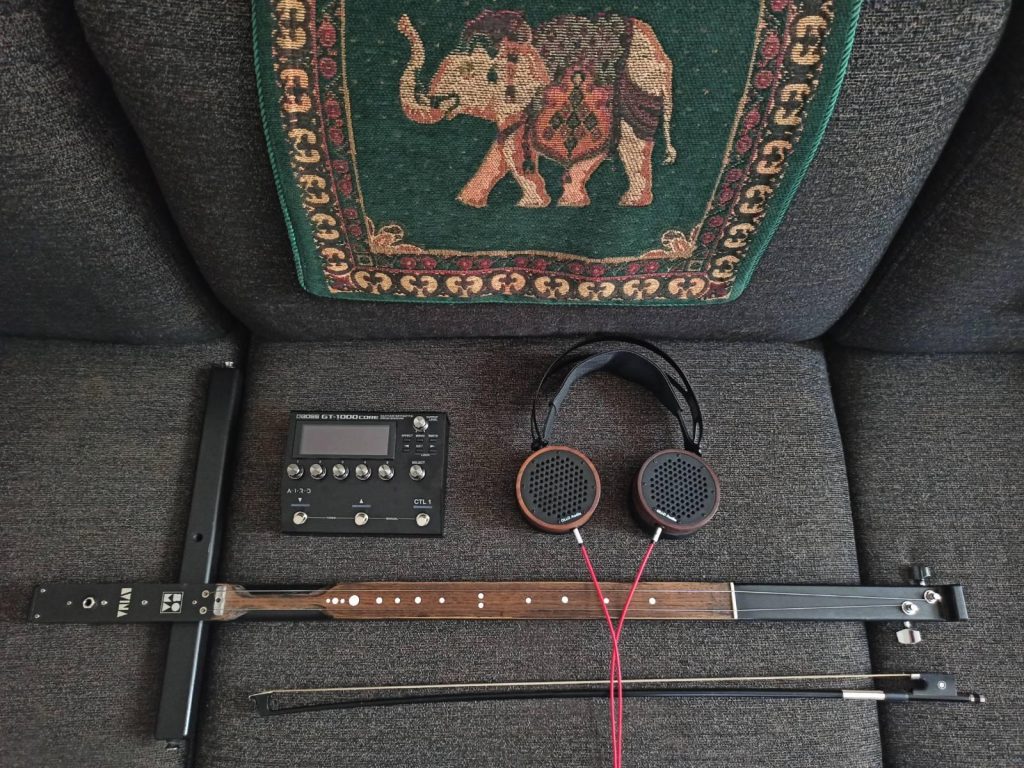
Why did I choose to pick up the Soma Dvina at 40, and not earlier?
I can say this with absolute certainty – there were no musicians in my family. Not my parents, not my grandparents. There was simply no one in my family to introduce me to the wonders of music creation and human spirituality. Neither of my parents played an instrument or sang, but as a child, I was enamored with music. My father was a great fan of Pink Floyd. Together with my mother, they also enjoyed Queen and Freddie Mercury. We had a vast collection of vinyl records filled with rich, intriguing music to listen to, appreciate, and analyze. The curiosity never ceased; I always wondered how artists could create such beautiful songs. This fascination with music started at an early age.
Despite wanting to create my own music, I had no idea how to go about it or even how to approach this complex task. I would gaze in awe at skilled musicians delivering breathtaking live performances, often moved to tears. Music, I realized in my adulthood, can stir souls and become a spiritual and healing force not only for the musician but for others too. In my forties, I decided to embark on this journey, realizing it’s never too late to undertake an exciting new endeavor. Remember, it’s never too late, until death makes it impossible. Keep this in mind; it’s an opportunity to transform your life positively.
Is it challenging to approach a fretless instrument without any significant theoretical training?
Yes, indeed. But don’t be daunted. The process may not be straightforward, but it’s incredibly rewarding. The most challenging part is the beginning. How do you know if you’ve played the correct note (I mean in terms of frequency)? Frankly, I can’t tell you what note I’ve just played. Was it an existing note or something in between two notes? I don’t know, and it doesn’t really matter.
Reflect on your childhood, when you were learning to speak in a world filled with adults who spoke fluently. You were driven by a strong desire to communicate as effectively as they did, which involved endless trials and errors. If you adopt the same approach in learning a new instrument, you will succeed. The key is repetition, not focusing on „correct notes“ if you’re not yet able to play them correctly.
So how do I break in and keep practicing? And what should I practice?
Avoid focusing on playing notes correctly. It can lead to quick exhaustion and disappointment, potentially leading you to abandon your musical journey. Instead, embrace your mistakes and enjoy the process. Try not to get distracted by trivial things and immerse yourself in the enchanting forest of musical tonality. Music has far more to offer than just the 12 notes per octave. With patience and repeated practice, you’ll witness improvement. Remember, believing in yourself is the first step to learning and achieving success. This principle applies not only to music but to all aspects of life.
Can I learn to hit those notes accurately? I will need this skill, won’t I?
At the beginning of your journey, focus on being playful and explorative rather than on hitting the correct notes. Enjoy the tone, listen to the organic qualities and texture of the sound. It’s a magical experience, regardless of the frequency or note. Keep in mind that music encompasses more than the 12 notes per octave used in Western music. Forcing yourself to hit these 12 notes as your first step might lead to quick disappointment and abandoning the instrument.
Am I allowed to play anything on my Soma Dvina?
Absolutely! And please do so with joy and as often as possible. Your progress is measured by the hours spent playing, not the days spent owning the instrument. That’s why some can play far better after just one year than others who’ve been trying for five years. Everyone’s approach is unique, so find your own way and use my experience merely as inspiration.
What does a good training session look like?
The first thing you should learn is to create a sustained tone for a prolonged period. Start by moving the bow at a constant speed and pressure. Once you master this, you can begin to play with the fingers of your left hand. Start with something simple and enjoy it. This process can take just a few days or weeks with regular practice.
I keep making mistakes, and it’s not fun.
I understand how you feel. I’ve been there too. When you make a mistake, embrace it and build on it. By repeating the same mistake, it no longer appears as a mistake to your listeners, but as an intentional part of the performance. Your mistakes and impurities can become your most potent weapon! Use them wisely.
Comments are closed.
